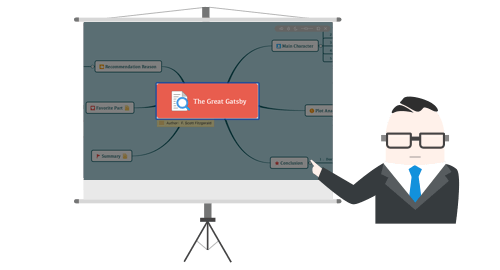

Kanban view is a specialized application of MindManager’s priority view. When they return to the map view, the icons and priorities they have assigned to each topic are displayed with them. This simple and intuitive operation enables users to quickly categorize and organize many topics. They can drag and drop topics from the “uncategorized” column at the far left of this view into the appropriate columns. Each lane can represent different properties, such as priorities or topic icons.
#XMIND PRO 8 SERIES#
In MindManager 2019, priority view enables users to view their mind map’s topics within a series of vertical swim lanes. The Enterprise version of MindManager 2019 adds even more power, including the ability to identify overbooked resources, and highlight weekends and non-working days. They can also apply topic filtering to the chart, visualize the critical path and shade non-working hours to make this data easier to see. Users can easily insert new task siblings, subtasks, predecessor and successor tasks using right-click commands, remove slack from project schedules and shift the entire project to an earlier or later date range. In contrast, MindManager 2019’s Gantt view offers users the ability to manipulate data in more ways. The Gantt template included in XMind 8 Pro limits the manipulation of data to side-by-side data tables and horizontal bar charts. They can use this capability to drive their strategy, clarify key points they wish to communicate and align teams around, develop plans and more. Users can also employ MindManager’s powerful search, conditional formatting, calculations and other tools to transform their diagrams from static pictures into interactive diagrams. Topic elements, such as attachments, links and notes.While XMind 8 Pro enables users to filter their map’s content based on icons, topic labels and the people to whom they have assigned tasks, MindManager’s Power Filter enables them to filter on six types of elements, based upon: Once users place these objects in a diagram, they can lock them in position, so these elements aren’t editable.įiltering is another area of difference between XMind 8 Pro and MindManager 2019. Specifically, Digital Architect provides five types of objects for embellishing diagrams and creating new ways to visualize business information:

This allows users to create just about any type of diagram they can imagine. In addition, MindManager 2019 offers the Digital Architect, which provides even more diagramming capabilities. Specifically, MindManager 2019’s diagramming templates enable users to create: MindManager 2019 provides the option of creating eight different types of business diagrams that enable users to manage business processes, design marketing funnels and lay out project timetables in engaging visual formats. XMind 8 Pro offers fishbone (Ishikawa) diagrams and matrices, which allow root cause analysis and two-axis comparisons. Since its launch, MindManager has added a significant amount of diagramming functionality to allow users to map business information in ways not available to users of XMIND 8 Pro. As such, users are required to adapt XMind 8 Pro’s business-oriented templates to fit their project management needs. In contrast, none of the templates that ship with XMind 8 Pro are specifically designed to help users get a head-start on project management. This includes its ability to display properties, rollups and calculations, its powerful and flexible Gantt chart and much more. In addition, many of MindManager’s advanced capabilities are designed to complement its project management templates.

MindManager 2019 includes seven templates designed specifically for use in project management: Here are five unique features of MindManager 2019 for project management that aren’t found in XMind 8 Pro: Project management templates MindManager 2019 is a powerful, flexible tool that enables users to visualize their project data in ways they never dreamed possible.


 0 kommentar(er)
0 kommentar(er)
